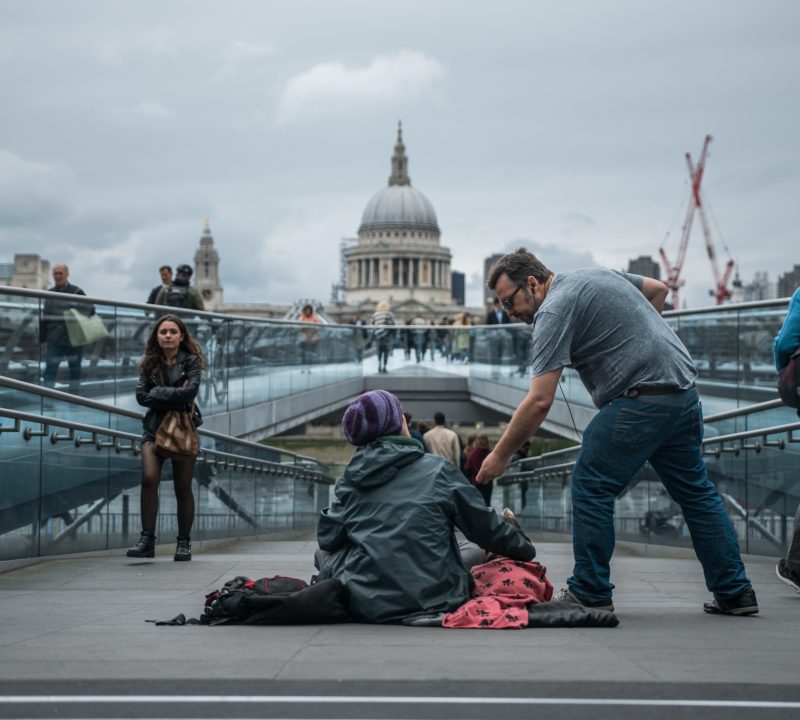Jennifer Brown argues that discrimination and harassment have been consistent features of policewomen’s experiences and appear in many jurisdictions. One possible solution to this problem is the creation of a professional body for the police that lays out clear standards of conduct, holds regulatory hearings, and deals with offenders.
The opening of the Danish TV cop drama The Killing sees Detective Sara Lund being called out to a murder scene. On her arrival she is directed to a door in a darkened building. The door closes behind her and she explores the dark corridor with just a flashlight. On spotting a trail of blood she descends some stairs to find a hanging figure which turns out to be a sex doll, and is a trick played on her by fellow officers as a leaving present as she prepares to transfer forces. It’s a crass and gross prank and symptomatic of the sometimes sexually charged environment of the police working environment.
I have been studying the police occupational culture since 1986 when I first went to work for Hampshire Constabulary as a research manager. During my time at Hampshire I conducted one of the first major studies of sexual harassment and sex discrimination in the police service. So it was with some dismay I read the Guardian article by Sandra Laville on cases involving police officers or police community support staff implicated in sexual misconducted with children, vulnerable adults or colleagues.
In my original research published in 1993, 6 per cent of the police women surveyed admitted to suffering a serious sexual assault from colleagues, although most did not wish to report their victimisation. We know from the British Crime Survey rape and sexual assault is a hugely under reported crime, so it is possible that these more recent victims of rape or assault at the hands of those working from within the police is also under reported.
Clearly, perpetrators of sexual offences come from all walks of life and there have been numerous examples of abuse of authority from care home workers, priests and other professionals charged with rape or sexual assaults. Figures from the Nursing and Midwifery Council (NMC) suggest of the 0.3 per cent of complaints, 22 per cent were about patient abuse, 4 per cent inappropriate relationships with colleagues and 4 per cent accessing pornographic images.
So notwithstanding the unreported, like the police numbers revealed by the Guardian, actual rates of abuse are very low considering the total number of professionals involved. But what is shocking about such offenders is that, they like the police, are in professions that are supposed to protect the vulnerable. It is to be hoped that recruitment, vetting and training would minimise the number of individuals entering the police likely to engage in sexually oppressive behaviours or pray on the vulnerable.
Research from the Metropolitan Police indicates that the more vulnerabilities a person has, such as youthfulness, mental health issues or alcohol/drug use, the greater their susceptibility to abuse. So the police by virtue of their work do come across the vulnerable in large numbers. Moreover, it was relatively easy to access the details of NMC fitness to practice hearings because this is the regulatory body of the profession and they produce annual statistics. The Guardian journalist had to use freedom of information requests, comb through law reports and cases from the Independent Police Complaints Commission to derive her list of perpetrators.
This then poses two questions: what is it about the police working environment in particular that might create an atmosphere where perpetrators of sexually oppressive behaviours can engage in misconduct; and how can such conduct be brought to book?
Susan Fiske an American Psychologist provided an account of the structural features of organisations where sexually harassing behaviours are more likely to take place. These included where there is a lateral and horizontal gender imbalance in favour of men, the presence of sexually explicit material in the workplace and the normalised use of sexual or profane language.
Gender segregation is still a feature of most police forces despites the equality gains over the years. Women rarely entered policing at the inception of a nation’s police force(s), rather their entry was delayed and then often marked by circumscribed roles and limited occupancy of all available ranks. The first woman to be appointed as a police officer was in Stuttgart in 1903 and these early pioneers were used to fill a gap between law enforcement and welfare and to mitigate difficulties experienced by policemen in managing female offenders and female victims of crime.
The progress of women into mainstream policing in established democracies of Western Europe, developed countries and in America and Canada was to some extent assisted by equality legislation which provided an impetus to equal rights and treatment of women generally with policewomen being amongst the beneficiaries.
As forces achieve integration, women begin to perform tasks in areas of specialism that were previously limited to men. Migration of women into specialist areas of policing, dominated by men during the period of segregation, was slow and is still incomplete. In 1990, women predominated in the investigation of child crime, sexual offences and domestic violence. This is still the case and women are underrepresented in vice squads, traffic departments and firearms units, which remain persistently gender segregated. Women, in most jurisdictions have significantly smaller percentages of senior women compared to male colleagues.
Discrimination and harassment has been a consistent feature of policewomen’s experiences and appear in many jurisdictions. Forms of sexual harassment include sexist jokes, comments about women’s appearance, use of derogatory or offence language, being pressured for dates and deliberate sexual contact. Sexual harassment is very difficult to prevent in male dominated organisations.
The suggestions from the research literature are that the dynamics are complex and that there is interplay of other factors such as work environment which provides better explanations than demographics alone. Moreover, the presence and implementation of comprehensive anti-discrimination and harassment policies is insufficient by themselves as victims were often fearful of complaining or disenchanted that complaining would make any difference.
One possible answer lies in one of the reforms currently being proposed, i.e. the creation of a professional body for the police possibly along the lines of the medical profession with the prospect of; a), clear standards of conduct and competency; b), regulatory hearings if these are breached; and c), strike off for professionals who are proven offenders.
Note: This article gives the views of the author, and not the position of the British Politics and Policy blog, nor of the London School of Economics. Please read our comments policy before posting.
Jennifer Brown is a Professor in the Department of Social Policy at the LSE, and Co-Director of Mannheim Centre for Criminology.







